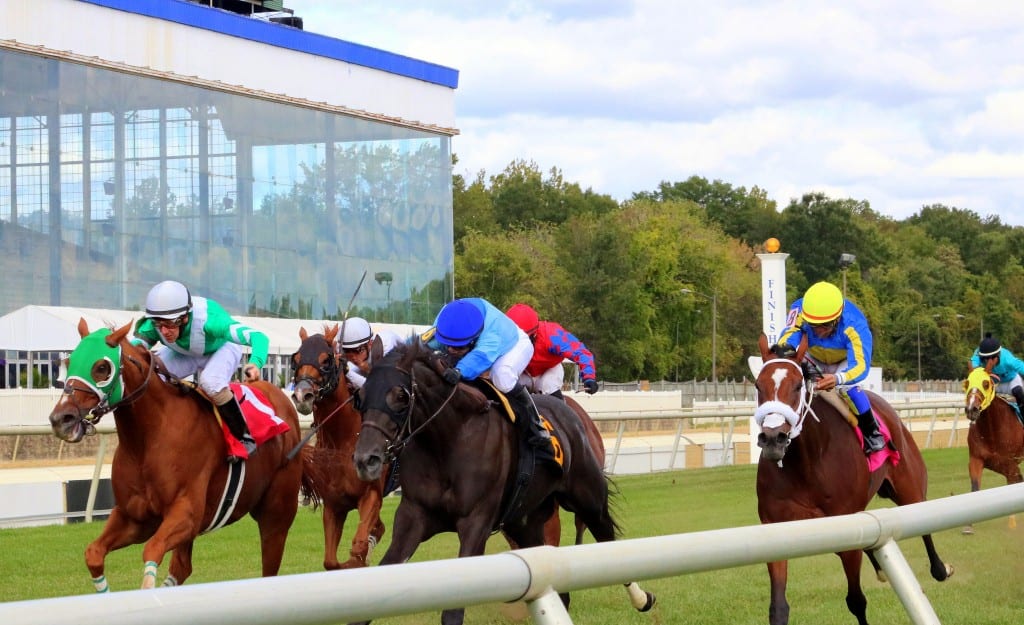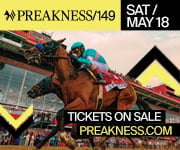Stover: Good horsemanship key in avoiding breakdowns

Photo by Dottie Miller.
by Frank Vespe
It’s perhaps the most common racetrack explanation offered when a horse breaks down.
“He took a bad step,” we’re told.
Common, perhaps, but also, most often, incorrect, Dr. Susan Stover told horsemen at a seminar hosted at Laurel Park by the Beyond the Wire aftercare program Tuesday. Stover’s presentation, entitled “Training for Injury Prevention,” followed a presentation by Dr. Amy Burk of the University of Maryland on “Equine Gastric Ulcer Syndrome.”
“It’s very rare that a horse takes a bad step and has an overload that’s of sufficient magnitude to cause a bad fracture,” Stover said in an interview following the seminar.
Stover, a professor of veterinary anatomy at the University of California-Davis and director of the J.D. Wheat Veterinary Orthopedic Research Laboratory, is a nationally recognized expert in skeletal development and musculoskeletal injuries in horses. She also works with the California Horse Racing Board’s Postmortem Examination Program; through that program, the CHRB conducts a necropsy of every horse that dies spontaneously or is euthanized a CHRB-regulated racetracks and training facilities.
And what that has demonstrated, Stover told the gathering, is that when a horse suffers a catastrophic breakdown, “Something was going on in this bone before it actually fractured.”
The skeletal system is a remarkable one. Injured bones repair themselves — a process known as bone regeneration — and the skeleton develops in response to the stimuli it receives via the loads it is asked to bear.
“Racehorses are not born with racehorse skeletons,” Stover said. “Training molds the skeleton of the racehorse to be a racehorse.”
But it can also plant the seeds that lead to catastrophic breakdowns. Overloading the bone results in the generation of micro-fractures that weaken the bone. Given time, the bone will repair and strengthen itself. Without sufficient time, however, those micro-fractures can become the weaknesses that turn into disaster.
“There’s a lot of good horsemanship in listening to the horse so that the skeleton has time to respond,” Stover told the group.
Early signs of trouble can include changes in the horse’s demeanor, disappointing performance on the track, or transient lameness. Horsemen should take those signs seriously, Stover said, and err on the side of caution. A couple of weeks of reduced training now can prevent much larger problems from developing down the road.
“It would be ideal for both horse welfare and economics to back off [with horses showing these signs], and it can allow your horses [to have] longer careers,” she pointed out.
One important step, Stover said, is to realize that the horse’s bones train to the level of work it is asked to do, rather than the amount. That is, the highest loads — the greater speed — the horse’s bones are asked to handle guide the skeleton’s response. But the skeletal response can occur after about a furlong’s worth of high-intensity work.
“Galloping lots of miles does not strengthen bone,” Stover said. Short, high-intensity work does, and she added, “The rest is trauma.”
Of course, she acknowledged, horsemen need to balance what’s best for skeletal development with other needs, including muscular development and building stamina. There are no hard-and-fast rules as to how best to achieve that balance.
That’s why she repeatedly referred to “the art in training: to be able to read the horse, to see when they’re not quite right, and back off a little without taking them out of training.”
There are also, Stover said, forces in play beyond simply the horse and horseman. The challenging economics of the sport, the emphasis on three-year-old racing, and the large purses available to juveniles and three-year-olds all push people to ask more from young horses than many are able to give.
“When we lose horses through attrition from early injuries, it’s not good for anybody or the industry,” she said.
But Stover believes that the industry may be starting to move in the right direction.
“Clearly, I think the industry is receptive, the trainers are receptive, owners are receptive,” she said. “We have pressures that are influencing the way people behave in the industry. We need to create an environment where we can help people make good choices.”
NOTES Around four dozen people attended the event in the new conference room at Laurel Park, including 10 or so trainers, said event organizer Jessica Hammond. More watched via live streaming online. “The climate of the just the world and people’s opinions about animal welfare is changing, and we need to keep up with that for the industry to thrive,” Hammond said. “People need to be paying attention to the health and safety and soundness of their horses, and one of the ways we can encourage that is by educating people and people attending these educational opportunities.”










